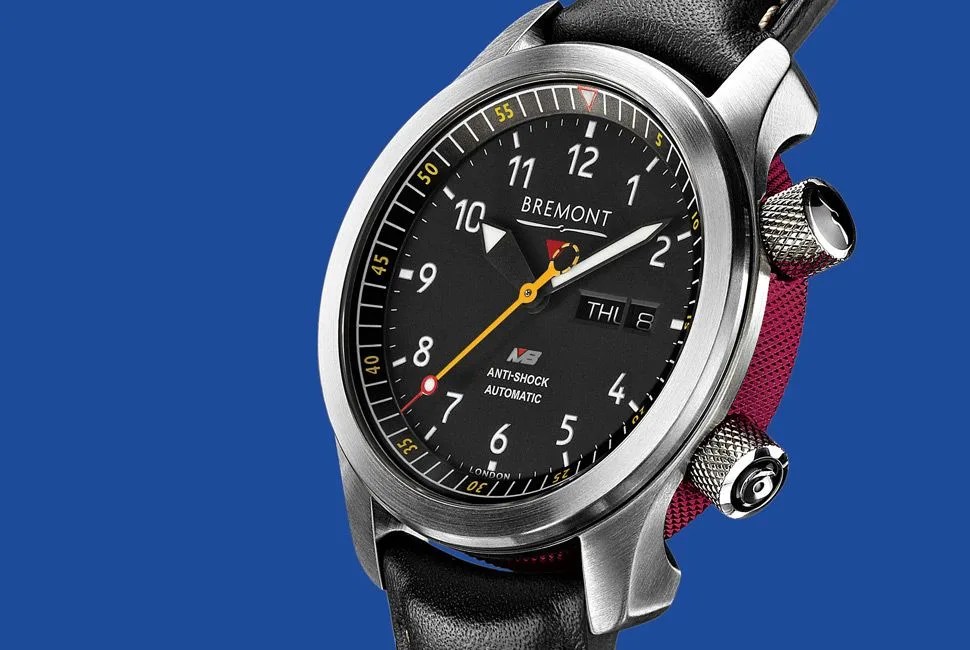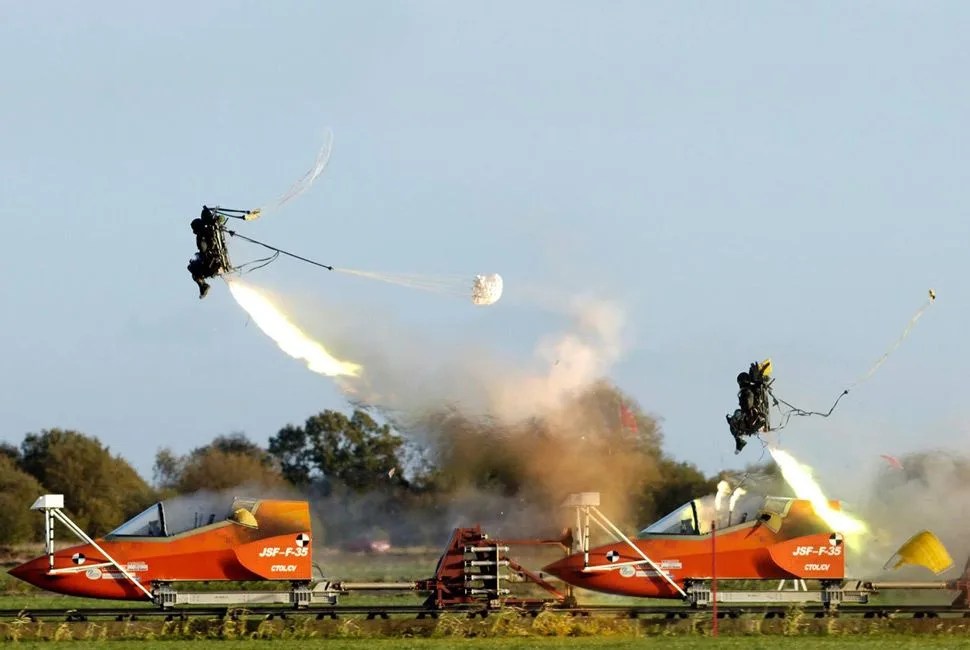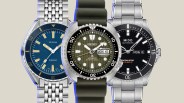Boeing test pilot William Mnich has been in aviation for nearly his entire life. He began his flying career in high school when he was only 15, then spent more than two decades flying as a Radar Intercept Officer (RIO) at the back of a Grumman F-14 Tomcat fighter jet for the Navy. He’s also one of a few thousand individuals who have ejected from an airplane and lived to tell the tale — and part of an even smaller group of people who have had to do it more than once. Mnich was lucky enough to walk away from both incidents with no life-changing injuries and a good story to tell. Plus, a very special watch.
The watch is a Bremont MBI, a special edition of the Bremont MBII, which Bremont designed with the help of Martin Baker, the British aviation company responsible for supplying about 70 percent of the world’s aircraft with ejection seats. “Martin-Baker was always a bit of a household name within our family as we grew up,” says Bremont founder Nick English. “The testing these seats have to go through is nothing short of heroic, and to have the opportunity to be able to develop a watch using their environmental and engineering testing facility was magical.” Bremont’s aim with the Martin Baker series of watches was to over-engineer a watch to the point where it could stand up to the rigors of ejecting from an aircraft. That means that it undergoes intensive testing, including extreme temperature changes (from -40 degrees Celsius to 40 degrees Celsius), altitude changes (the watch is brought up to 100,000 feet then taken back down again), shakes and vibrations, prolonged salt and live ejection testing.
“With the testing and development behind us, both Martin-Baker and Bremont felt that for those pilots who have successfully ejected from a fighter aircraft (it really was a special and elite club), a bespoke and equally special watch would commemorate this well,” said English. Special commemorative watches for specific achievements are nothing new. Rolex gives an engraved Daytona to winners of the 24 Hours of Daytona, Bulova used to give NCAA champions their own specially branded watches — even Domino’s Pizza has given Rolex Air-Kings to managers who met lofty sales goals. Like those, the Bremont is an exclusive timepiece, and though it can be purchased, you can only do so if you’ve cheated death in a Martin Baker ejection seat. For that reason, it is incredibly meaningful to its owners.
In a real-world ejection scenario, a pilot can undergo acceleration up to 14 g’s. “It’s over so quickly you almost can’t comprehend it,” says Mnich. “Depending on your state of adrenaline or your state of awareness, sometimes you may be aware of that g-force, those shocks to your body, and sometimes not. I don’t remember the acceleration, violent as it was. Normally it’s enough to make the average person unconscious, but when you’re that scared, I guess, things work a little differently in your physiology.”
Mnich’s first ejection happened aboard the flight deck of the USS Kitty Hawk on September 7, 1981, when a landing LTV A-7 Corsair II crashed into the back of his F-14 on the aircraft carrier’s runway. “There are a lot of safeguards that prevent that from happening… and every one of those things that could have prevented that accident failed,” says Mnich.
“People will tell you that you don’t generally eject when you think you’re going to die, you eject only when you know you’re gonna die.”
In an F-14, the ejection system is set up so that if one of the jet’s two occupants makes the decision to bail, both will be ejected from the plane. Mnich explains that in most scenarios, the pilot is so focused on trying to recover the aircraft that the RIO in the backseat is usually the one to make the decision to eject. But not in this case.


